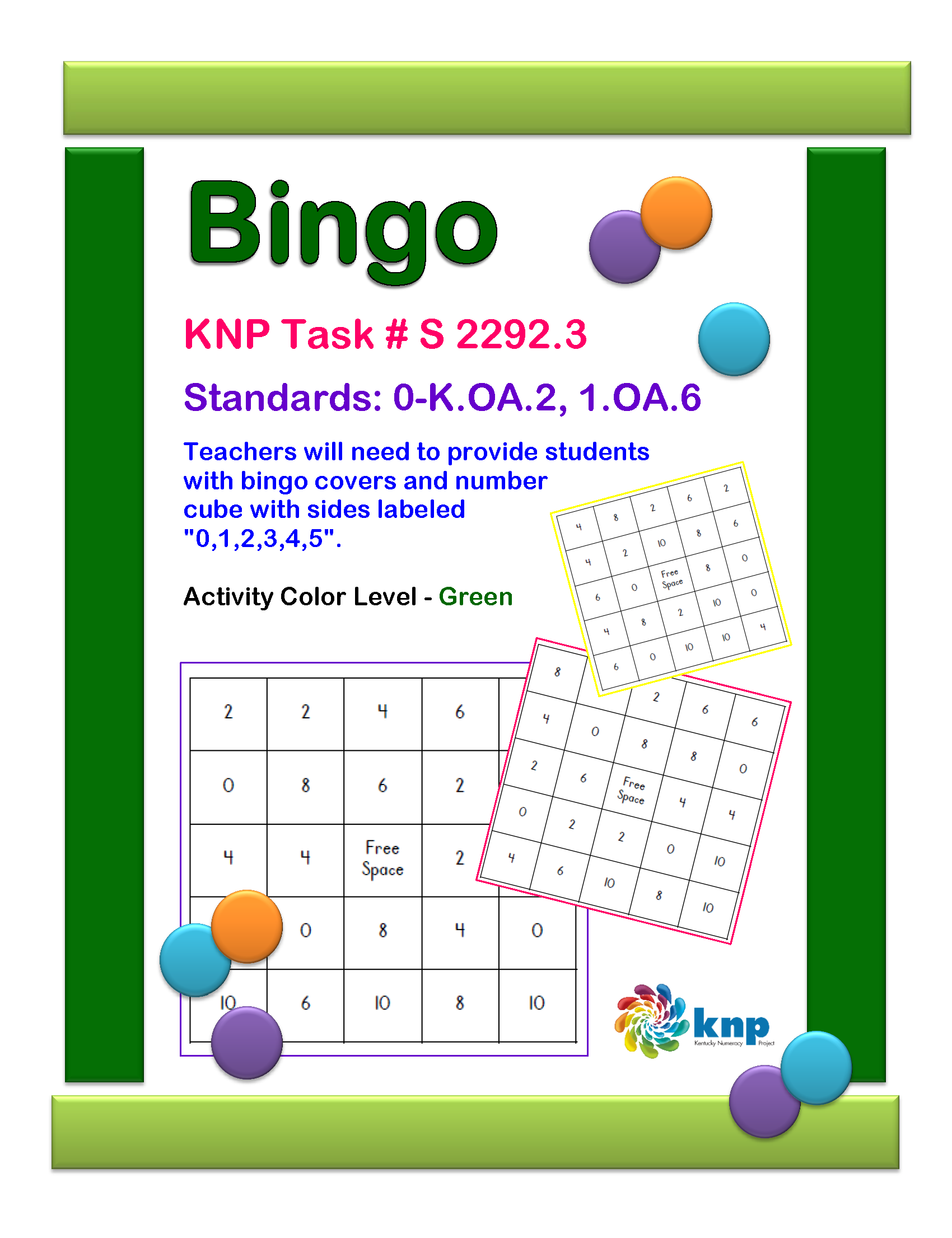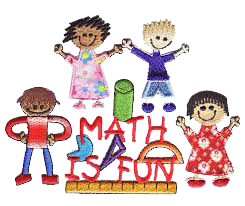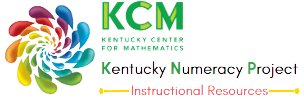“Bingo (doubles to ten)”
KNPIG ID #S 2292.3
What's this activity about?
Everybody loves bingo! This game will challenge your child to recognize numbers in different forms while playing a fun game of bingo. The board is composed of different forms of the numbers two through ten and you and your child will try to match five in a row to get bingo. It won’t be hard to get your child to play this engaging activity. Have fun!
What materials do we need?
Bingo Boards, (print as many as you need)
Bingo markers
Follow this link to a virtual die you can customize with the numerals- 0,1,2,3,4,5: http://www.bgfl.org/bgfl/custom/resources_ftp/client_ftp/ks1/maths/dice/index.htm

How do we play?
Each player will select a bingo board. One at a time player will roll the numeral die and then determine the double of the number. All players will check their bingo board and place a marker on one square with the double. If the number is in more than one square, each player decides which square should be covered. Only one square can be covered each turn. The second player will roll the dot die, and the game continues until one of the players has covered four corners or a line (horizontal, diagonal or vertical).
Where’s the Math?
There is a lot of math that goes along with what your child is learning in school. Your child is learning addition as putting together and is also learning about doubles. He/she can use doubles to learn other facts. When your child knows their double well enough, he/she should no longer have to think about the solution before placing their marker. Your child is then able to use the doubles facts to find solutions to more difficult sums by breaking them into a doubles fact, plus whatever is left over, e.g. “Six plus eight is the same as six plus six plus two. I know six doubled is twelve, and then I just add the two to get fourteen.”
Things to Think About:
As you use this activity with kids, remember to be patient. Sometimes it’s hard not to help them along if they are having a hard time finding matches. There may be a lot of guessing at first, but if they continue notice where they are struggling and work in extra practice with those concepts in your everyday life.
When talking about doubles you can have your child think about their fingers or toes, 5+5, or wheels on a bus 2+2. Seeing so many things come in pairs can make this concept move from an abstract idea into something concrete for your child. Being able to relate math to the real world helps your child remember the concepts he/she is learning because he/she can reference something familiar when working on math activities and problems.
Feedback
Send us your thoughts and ideas about these activities. Email the KCM

